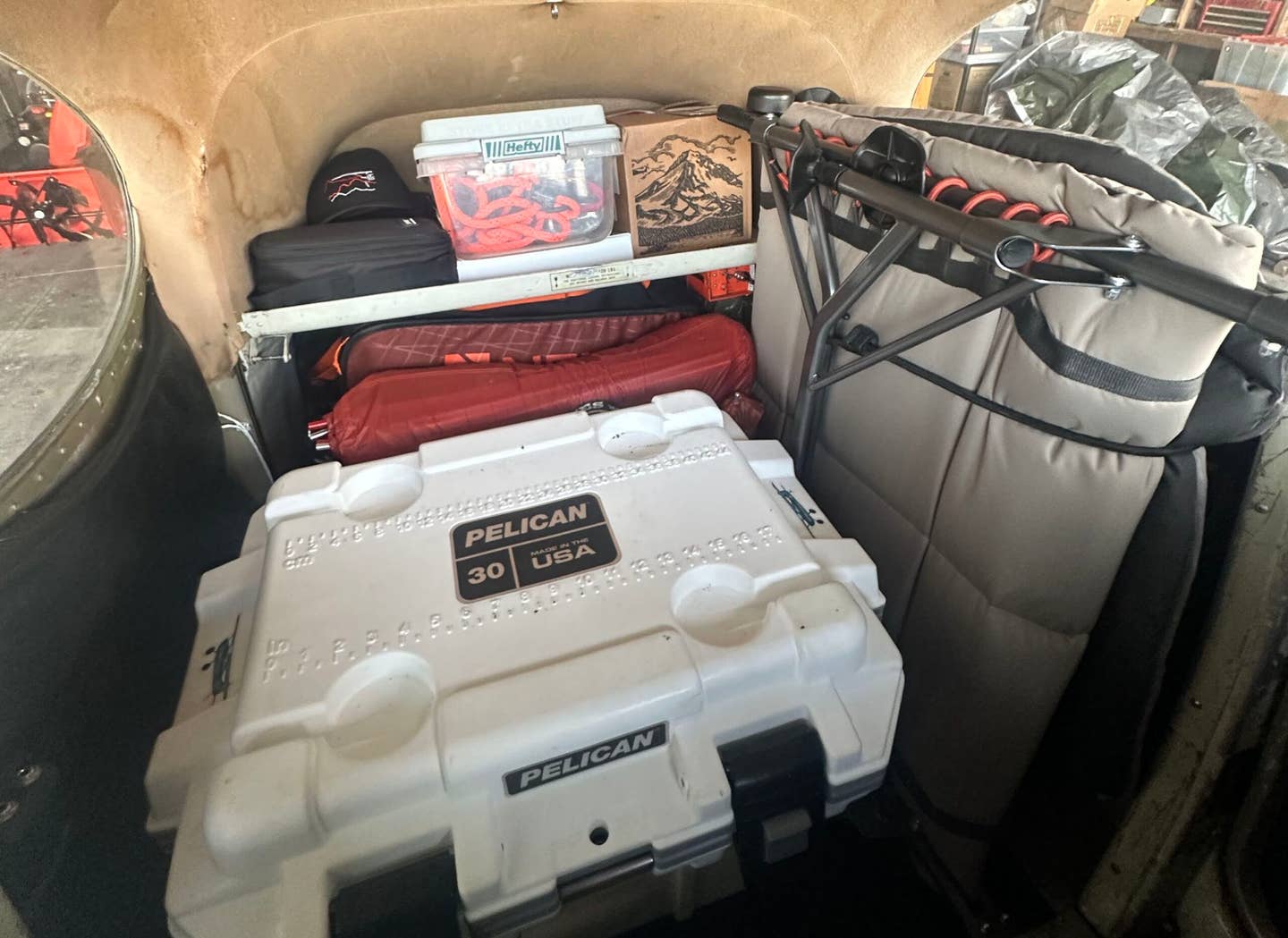EAA AirVenture: A Study in Cargo and Packing
With the rear seat removed, the 1953 Cessna 170B has almost exactly the same amount of cargo volume as a Subaru Crosstrek SUV.

With the rear seat removed, the Cessna 170 transforms into a capable cargo hauler and unlocks new flying experiences. [Courtesy: Jason McDowell]
With the rear seatbacks lowered, the 2024 Subaru Crosstrek SUV sports 54.7 cubic feet of cargo volume. Coincidentally, with the rear seat removed, the 1953 Cessna 170B has almost exactly the same amount of cargo volume.
These are the kinds of things one learns when one must beg friends for a ride home from a distant rural airport immediately following EAA Airventure in Oshkosh, Wisconsin.
Fortunately, this discovery did not stem from mechanical woes or becoming stranded due to weather. It was simply a function of playing musical vehicles as I dropped off my plane for its annual inspection on my way back home after a week of festivities at Oshkosh. Not wanting to leave my mechanic with 207 pounds of cargo with which to contend during the inspection, I carefully loaded all of my gear into the Crosstrek with little room to spare.
This year, the entire AirVenture experience was a study in cargo and packing. While I’d done it before, this year was perhaps the first in which my gear selection was completely dialed, with a proven selection of items to ensure my week in Oshkosh would be the best ever.
From tents to cots to power supplies to food, every piece was carefully considered and calibrated, making for a fantastic week. Besides creating a top-notch AirVenture experience, this also reinforced my philosophy that it’s best to purchase an airplane you’ll grow into rather than out of.
I didn’t always feel this way.
Early on in my journey toward aircraft ownership, I had nearly settled on the trusty yet tiny Cessna 140 or its simpler, flapless cousin, the 120. I loved the way they flew, and they were among the least expensive options available. They seemed to check all the boxes.
Eventually, however, I decided that for me the ability to take that epic, once-a-year trip was worth the higher purchase price and increased fuel burn throughout the rest of the year. Two years of pinching pennies and working massive amounts of overtime eventually enabled the purchase of my larger, four-place 170.
And even though I never carry more than one passenger, and even though I only fully utilize the cabin volume once a year, the effort was entirely worth it. Had I settled for the smaller 120/140, every one of my Oshkosh experiences would be completely different.
For one, the additional space allows for luxuries that can completely transform any camping trip.
Years ago, in my motorcycle days, I learned firsthand that while it’s possible to pack extraordinarily small and light, this comes with significant compromises. The lightest tents and sleeping pads on the market, for example, function fine but prioritize minimalism and utility over comfort.
Now, with my roomy 170 made all the more voluminous via the removal of the rear seat, I could afford to upgrade my Oshkosh trip accordingly.
Going through my mental list of past annoyances, I addressed each individually. Thin sleeping pad that leaves me aching in the morning? Guess I’ll just go ahead and order the plush cot. A few extra changes of clothes that allow me to present myself at evening get-togethers as a civilized person rather than a shipwreck survivor? Don’t mind if I do.
The extra space and payload also enabled me to bring two laptops and a second monitor, so I could work remotely in the days leading up to the big event. Suddenly, I was able to live and work from the airplane. All it took was some careful weight-and-balance calculations and a bit of strategic positioning of the heavier items.
- READ MORE: EAA AirVenture 2024 in Photos
The extra space transforms the Oshkosh experience for friends, as well.
Two years ago, one friend found herself sleeping in a pool of rainwater when her cheap tent succumbed to passing storms. This year, an airline pilot friend came straight to Oshkosh from a work trip without a tent or sleeping pad. In each case, the 170’s cabin allowed me to toss in an extra tent and sleeping pad from my aforementioned motorcycle camping days. For the cost of an additional 2.5 pounds of gear, each friend enjoyed their trip immensely.
It often makes sense to expedite one’s entry into ownership by selecting a small, inexpensive type to begin with. If, for example, one is certain one's mission will always be limited to short local flights.
But sometimes, buying an airplane capable of something more—even if that something occurs only once a year—can make it all worthwhile.

Subscribe to Our Newsletter
Get the latest FLYING stories delivered directly to your inbox






